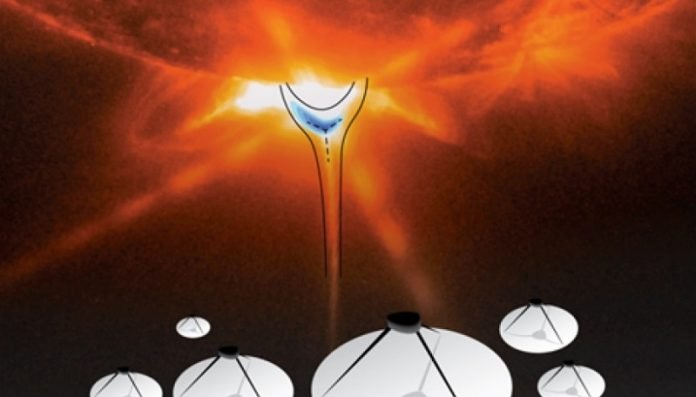
Solar flares are among the most violent explosions in the solar system.
But despite their immense energy — equivalent to a hundred billion atomic bombs detonating at once — physicists still haven’t been able to answer exactly how these sudden eruptions on the sun are able to launch particles to Earth, nearly 93 million miles away, in under an hour.
Now, in a study published in Nature, U.S. National Science Foundation-supported researchers at the New Jersey Institute of Technology have pinpointed the precise location where solar flare charged particles are accelerated to near-light speed.
The new findings, made possible through observations of an X-class solar flare in 2017 by NJIT’s Expanded Owens Valley Solar Array radio telescope, have revealed a highly efficient particle accelerator located at the tip of the brightest point of the eruption in the sun’s outer atmosphere, called the flare’s “cusp region,” where the explosion’s ambient plasma is converted to high-energy electrons.
“The findings in this study help explain the long-standing mystery of how solar flares can produce so much energy in mere seconds,” said Gregory Fleishman, corresponding author of the paper.
“The flare unleashes its power in a much more vast region of the sun than expected by the classic model of solar flares.
This is the first time the specific size, shape, and location of this key region has been identified, and the efficiency of the energy conversion to particle acceleration inside the flare has been measured.”
The researchers say the discovery of the region, measured at almost twice the volume of Earth, could open new doors for investigating fundamental processes of particle acceleration ubiquitous in the universe.
“Our recent studies suggested the flare cusp could be the location where such high-energy electrons are produced, but we weren’t certain,” said Bin Chen, a co-author of the paper.
“We had originally uncovered a magnetic bottle-like structure at the site that contained an overwhelmingly large number of electrons compared to anywhere else in the flare, but now with the new measurements of this study, we can more confidently say this is the flare’s particle accelerator.”



